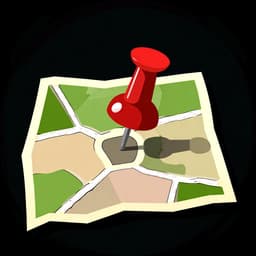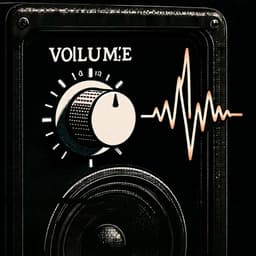It is very difficult
in SpanishEs muy difícil.
/ess mwee dee-FEE-seel/
This is the most direct, common, and universally understood way to say 'It is very difficult.' It's a reliable phrase that works in almost any situation, formal or informal.

When a task feels overwhelming, 'Es muy difícil' is the perfect phrase to describe that feeling.
💬Other Ways to Say It
Está muy difícil.
/ehs-TAH mwee dee-FEE-seel/
This version uses 'está' instead of 'es'. It implies that something is difficult right now, or the situation has become difficult, rather than it being an inherent quality. It's often used for situations, like traffic or a specific test.
Me cuesta mucho.
/meh KWEHS-tah MOO-choh/
A very natural and common way to personalize the difficulty. It literally translates to 'It costs me a lot,' meaning it takes a lot of effort from you. It shifts the focus from the task's inherent difficulty to your personal struggle with it.
Es complicadísimo.
/ess kohm-plee-kah-DEE-see-moh/
This is an emphatic way to say 'It's extremely complicated.' The '-ísimo' ending is a superlative, like adding 'extremely' or 'super' in English. It adds a bit of flair and intensity.
Es bastante duro.
/ess bahs-TAHN-teh DOO-roh/
This translates to 'It's quite hard' or 'It's pretty tough.' 'Duro' implies a kind of emotional or physical hardness, not just intellectual complexity. It suggests a grueling or trying experience.
No es nada fácil.
/noh ess NAH-dah FAH-seel/
An understatement that means 'It's not at all easy.' By negating the opposite, you strongly imply that it's very difficult. It's a common and slightly more nuanced way to express the idea.
Es un reto.
/ess oon REH-toh/
This means 'It's a challenge.' It frames the difficulty in a more positive, motivational light. You're acknowledging the difficulty but also implying it's something to be overcome.
Está cabrón.
/ehs-TAH kah-BROHN/
A very informal, slang term that can mean 'It's fucking hard' or 'It's a bitch.' It's strong and can be considered vulgar, so it should only be used with close friends.
Está yuca.
/ehs-TAH YOO-kah/
A regional slang term meaning 'It's tough.' 'Yuca' is a root vegetable (cassava) that is very hard, so the slang compares the situation's difficulty to the toughness of the vegetable.
🔑Key Words
Key Words to learn:
📊Quick Comparison
Choosing the right way to say 'it's difficult' depends on whether the difficulty is permanent, temporary, personal, or a positive challenge. Here’s a quick guide:
| Phrase | Formality | Best For | Avoid When |
|---|---|---|---|
| Es muy difícil | Neutral | Describing things that are inherently or generally difficult, like a subject or skill. | Describing a temporary situation, where 'Está difícil' would be better. |
| Está muy difícil | Neutral | Talking about temporary situations that are currently difficult, like traffic, a test, or the economy. | Describing the inherent nature of something, like 'Math is difficult'. |
| Me cuesta mucho | Neutral | Expressing your own personal struggle with a task, making it about your experience. | Making a general, objective statement about a task's difficulty for everyone. |
| Es un reto | Neutral | Framing difficulty in a positive, motivational way, especially at work or school. | You want to complain or express frustration, as it sounds too optimistic. |
📈Difficulty Level
Fairly easy. The main challenge is remembering to stress the second 'i' in 'difícil' (dee-FEE-seel), which is marked by the accent.
The main grammatical challenge is knowing when to use 'ser' vs. 'estar'. This is a core concept in Spanish that requires practice.
Understanding when to use formal language, positive framing ('es un reto'), or regional slang requires some cultural awareness.
Key Challenges:
- Mastering the 'ser' vs. 'estar' distinction.
- Knowing when it's appropriate to use informal slang.
- Remembering to use 'me cuesta' for personal difficulty.
💡Examples in Action
Aprender a tocar el violín es muy difícil, pero vale la pena.
Learning to play the violin is very difficult, but it's worth it.
Me cuesta mucho entender este acento, ¿puedes hablar más despacio?
It's very difficult for me to understand this accent, can you speak more slowly?
La situación económica está bastante dura para todos ahora mismo.
The economic situation is quite tough for everyone right now.
¡Uf, el examen de cálculo estuvo cabrón! No creo que haya aprobado.
Ugh, the calculus exam was fucking hard! I don't think I passed.
🌍Cultural Context
The 'Ser' vs. 'Estar' Distinction
One of the trickiest but most important concepts for English speakers is the difference between 'ser' and 'estar' (both mean 'to be'). 'Es difícil' implies something is inherently difficult (like quantum physics). 'Está difícil' implies a temporary state of difficulty (like today's traffic). Getting this right will make you sound much more natural.
Personalizing Difficulty with 'Me cuesta'
In English, we often say 'I have a hard time with...' Spanish speakers very commonly use 'Me cuesta...' which literally means 'It costs me...'. This is a fantastic, natural-sounding way to express personal struggle without sounding like you're just translating directly from English.
Colorful Slang for 'Tough'
Spanish is rich with regional slang for expressing difficulty. From Mexico's 'está cabrón' to the Caribbean's 'está yuca' or Argentina's 'es un quilombo' (it's a mess), these phrases add local color. Using them correctly can make you sound like a local, but using them in the wrong context can sound very strange, so listen for how others use them first!
❌ Common Pitfalls
Using 'Ser' for Temporary Situations
Mistake: "Saying 'Es difícil el tráfico hoy' (Traffic is difficult today)."
Correction: Está difícil el tráfico hoy.
Using the Rare Word 'Dificultoso'
Mistake: "Saying 'Es muy dificultoso'."
Correction: Es muy difícil.
Translating 'It's hard for me' literally
Mistake: "Saying 'Es difícil para mí...' (which is grammatically okay but less common)."
Correction: Me cuesta...
💡Pro Tips
Soften the Blow
If you don't want to sound too negative, you can soften the phrase. Use 'es un poco difícil' (it's a little difficult) or 'es algo difícil' (it's somewhat difficult). This is useful in professional settings or when you don't want to seem like you're complaining.
Frame it as a Challenge
In a work or academic setting, saying 'Es un reto' (It's a challenge) instead of 'Es muy difícil' sounds more proactive and positive. It shows you acknowledge the difficulty but are ready to tackle it.
Listen for 'Está'
Pay close attention to when native speakers use 'está difícil'. You'll often hear it when they discuss the economy ('la cosa está difícil'), a specific game, a test, or finding a job. This will help you master the 'ser' vs 'estar' difference in context.
🗺️Regional Variations
Spain
The 'lisp' on the 'c' is the most distinctive feature. Slang in Spain is very common among friends, and 'la hostia' is a powerful, multi-purpose intensifier.
Mexico
Mexican Spanish has a rich vocabulary of slang to express intensity. 'Está cabrón' is extremely common but should be used with care due to its strength.
Argentina
Argentinian slang often focuses on the chaotic nature of a difficult situation. 'Quilombo' is a cornerstone of Rioplatense Spanish and implies difficulty arising from chaos.
💬What Comes Next?
After you say something is difficult, someone offers help.
¿Necesitas ayuda?
Do you need help?
Sí, por favor. Te lo agradecería mucho.
Yes, please. I would appreciate it a lot.
Someone agrees with you that it's difficult.
Sí, la verdad que sí.
Yeah, it really is.
Menos mal que no soy el único que lo piensa.
Thank goodness I'm not the only one who thinks so.
Someone asks for more details about the difficulty.
¿Por qué? ¿Qué es lo complicado?
Why? What's the complicated part?
Es que no entiendo cómo empezar.
It's just that I don't understand how to start.
🧠Memory Tricks
When you see or hear 'difícil', your brain can immediately connect it to 'difficult' without much effort.
This mental link helps you remember that 'costar' is used for personal effort and difficulty, moving beyond a literal translation.
🔄How It Differs from English
The biggest difference is that English uses a single verb, 'is', for all types of difficulty. Spanish forces you to consider the nature of the difficulty: is it an inherent quality ('es difícil') or a temporary state ('está difícil')? Furthermore, the common Spanish structure 'me cuesta' personalizes the difficulty in a way that is much more frequent and natural than the English equivalent 'it's hard for me.'
False Friends & Common Confusions:
Why it's different: 'Hard' in English can mean difficult ('duro' or 'difícil') or physically firm ('duro'). While 'es duro' can mean 'it's difficult,' it often carries an emotional or physical connotation, whereas 'difícil' is more for intellectual or task-based complexity.
Use instead: Use 'es difícil' for most cases of 'it's hard.' Use 'es duro' when talking about a tough emotional experience or a physically demanding job.
🎯Your Learning Path
➡️ Learn Next:
It is easy
This is the natural opposite and allows you to express a full range of difficulty.
I need help
This is a logical next step after identifying that something is difficult.
I don't understand
This phrase helps you specify *why* something is difficult.
Can you explain that again?
A practical request to make when you find something difficult to comprehend.
✏️Test Your Knowledge
💡 Quick Quiz: It is very difficult
Question 1 of 4
Your friend is stuck in traffic and running late. How would they most likely describe the situation on the phone?
Frequently Asked Questions
What is the real difference between 'es difícil' and 'está difícil'?
Think of it like this: 'es difícil' describes the character of something (its DNA). 'Math is difficult' (La matemática es difícil). 'Está difícil' describes the condition of something right now. 'Today's exam is difficult' (El examen de hoy está difícil). Use 'es' for permanent or general qualities and 'está' for temporary states or situations.
How do I say 'it's hard FOR ME' in a natural way?
The best and most common way is to use the verb 'costar'. You would say 'Me cuesta...' followed by the task. For example, 'Me cuesta mucho madrugar' (It's very hard for me to wake up early). It's much more natural than saying 'Es difícil para mí...'
Is 'complicado' the same as 'difícil'?
They are very similar and often interchangeable, but there's a slight difference. 'Difícil' just means not easy. 'Complicado' suggests something has many parts, steps, or confusing elements that make it difficult. A task can be difficult but simple (like lifting a heavy rock), while another is difficult because it's complicated (like assembling furniture).
Are there slang ways to say something is difficult?
Yes, lots of them, and they vary by country! In Mexico, you might hear 'está cabrón'. In the Caribbean, 'está yuca'. In Argentina, 'es un quilombo'. These are very informal, so be sure you're with friends before trying them out.
Can I use the word 'dificultoso'?
You can, but you probably shouldn't. 'Dificultoso' is a real word, but it sounds very technical and formal, like something you'd read in an academic paper. In everyday conversation, 99.9% of people will just say 'difícil'. Sticking to 'difícil' will always make you sound more natural.
How can I make 'it's difficult' sound more positive?
To put a positive spin on it, say 'Es un reto' or 'Es un buen reto,' which means 'It's a challenge' or 'It's a good challenge.' This is great for work or school because it shows you're acknowledging the difficulty but are motivated to overcome it.
📚Continue Learning Spanish Phrases
Explore More Phrases in These Categories
Find similar phrases to expand your Spanish vocabulary:
Want to Learn More Spanish Phrases?
Browse our complete collection of Spanish phrases organized by situation, from basic greetings to advanced conversations. Perfect for travelers, students, and anyone learning Spanish.
View All Spanish Phrases →



